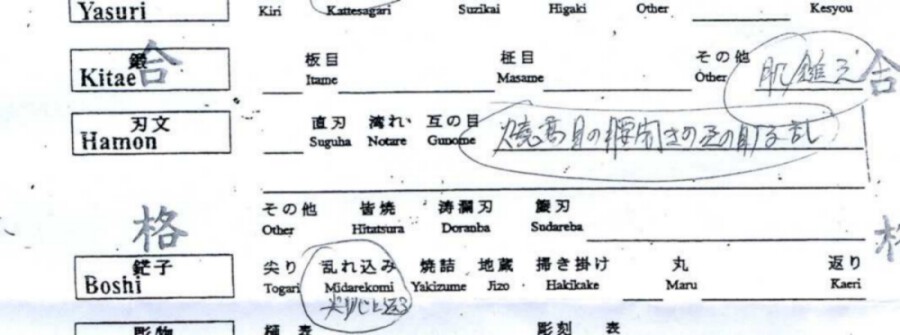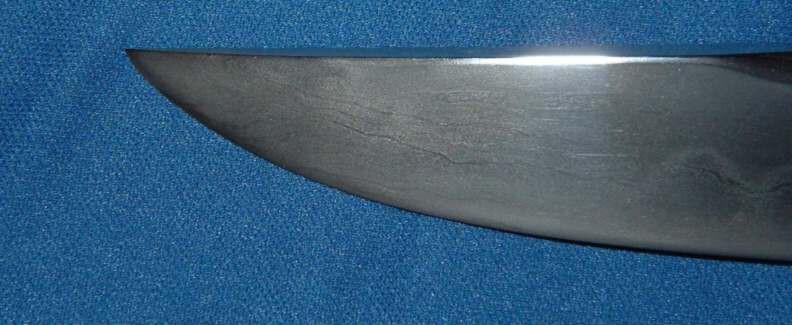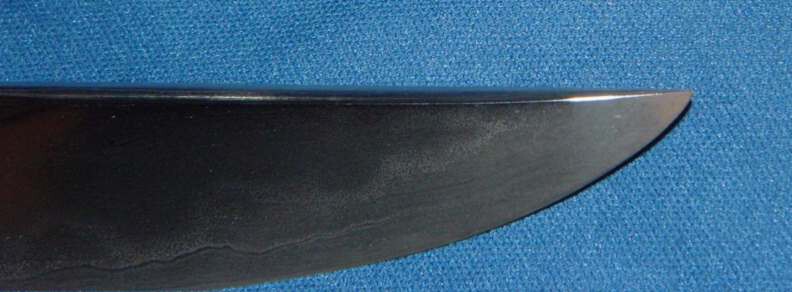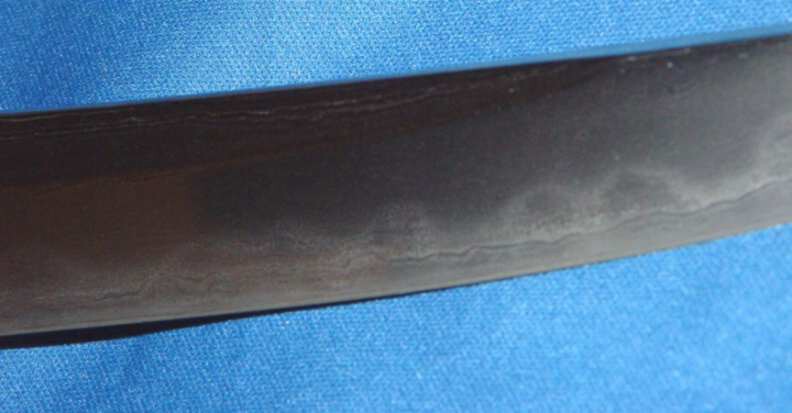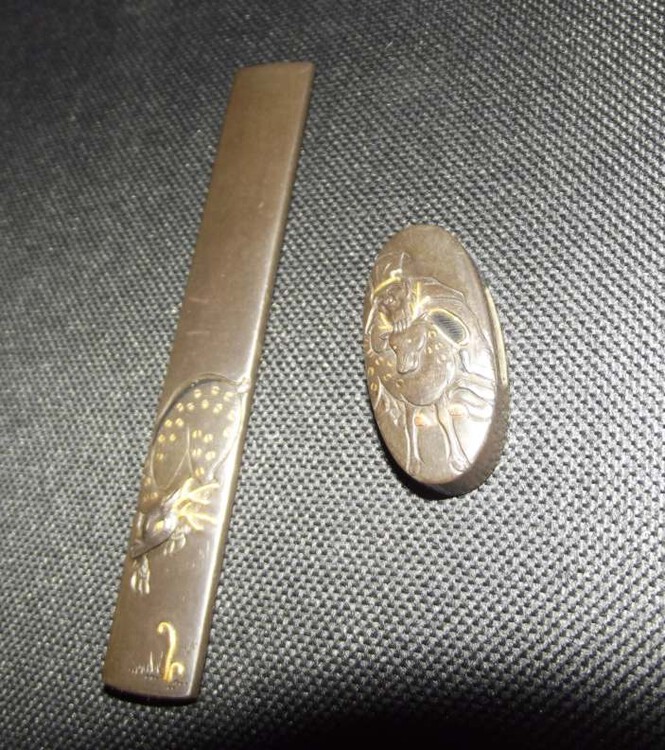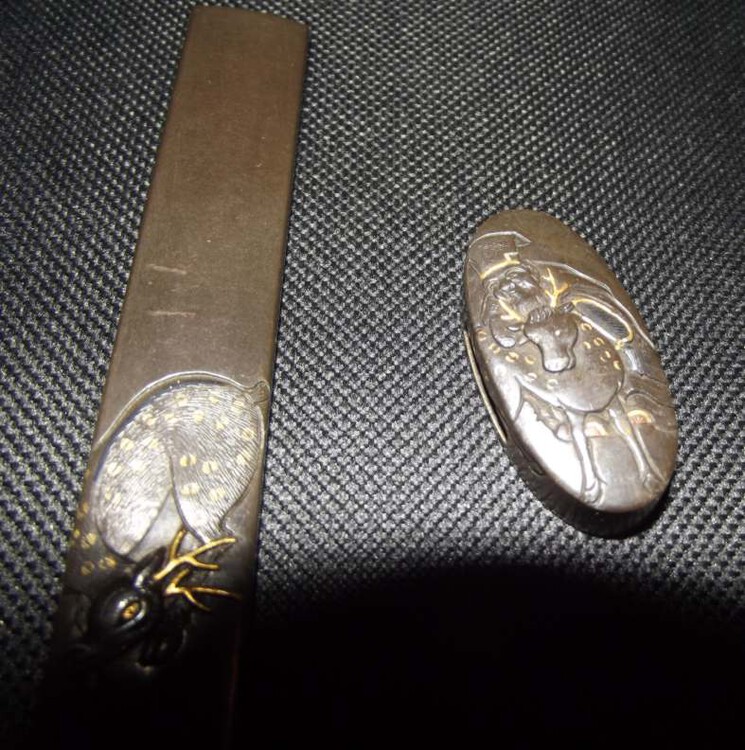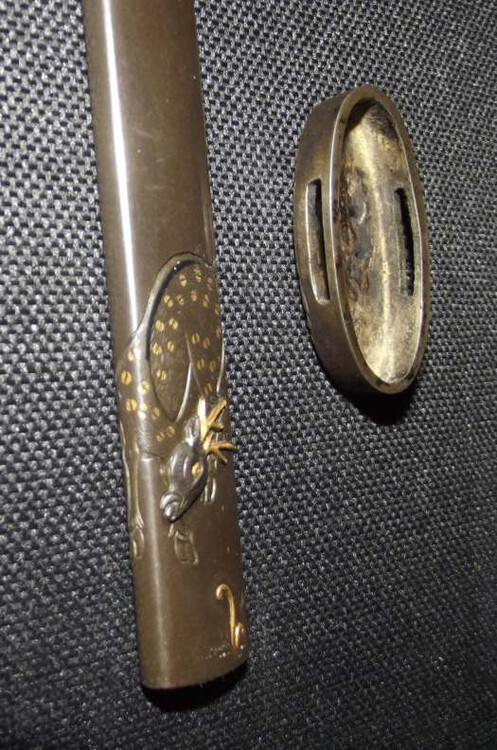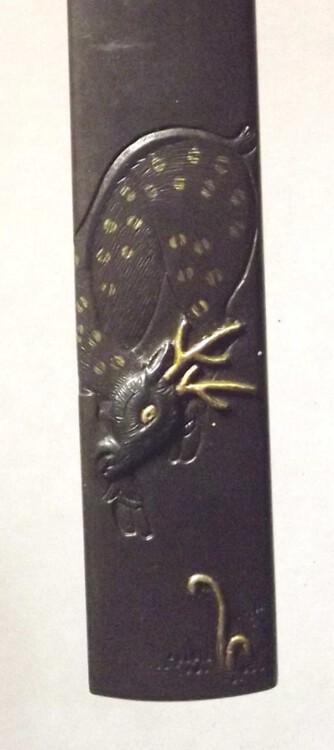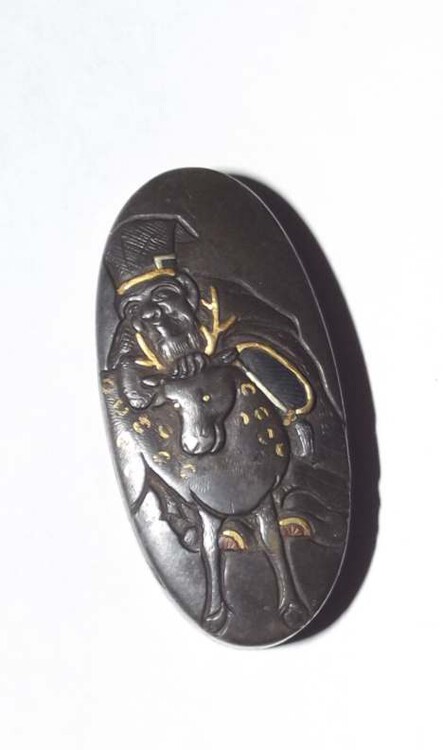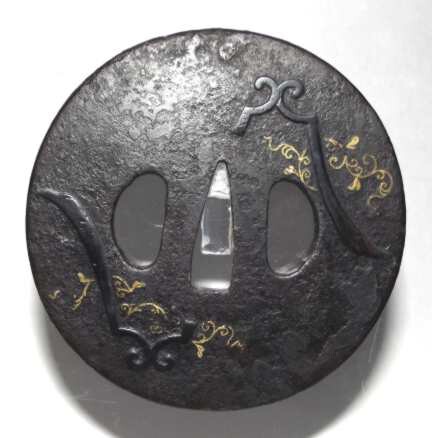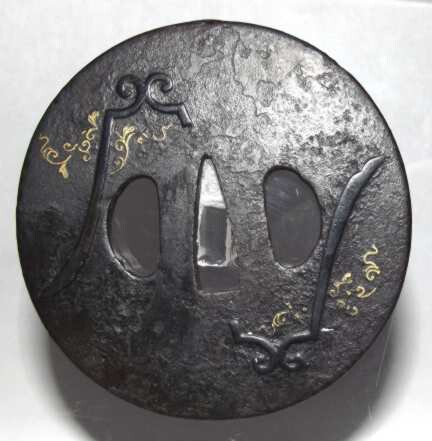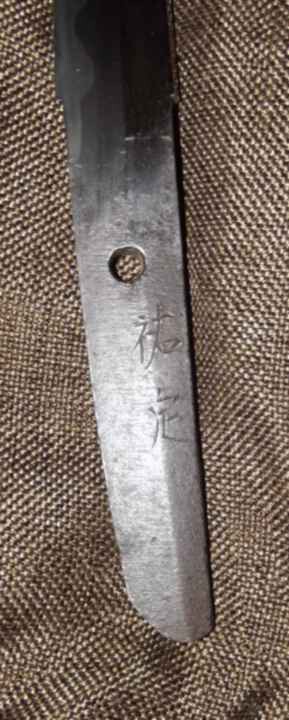-
Posts
435 -
Joined
-
Last visited
Content Type
Profiles
Forums
Events
Store
Downloads
Gallery
Everything posted by Lance
-
Thanks for all or the links, interesting how there were 3 (4 if you included mine) unsigned examples to 1 signed piece online. I've noticed a lot of Mumei Shinshinto swords compared to Shinto period, and wonder if it was part of the whole sword making revival that was going on at the time, trying to recreate Koto or if there was a concern of their signed swords turning up on the the wrong side in uncertain times? Regards, Lance
-
Thanks, the one part pasted below of the article was what I was asking: "One very important thing to note is that if Den is used before the name of a swordsmith, it is not talking about a tradition. For example, Den Kinju or Den Niji Kunitoshi means in regards to an example of their work that it is not exactly the sum of their known characteristics. In the case of these smiths where many unsigned works have been attributed, the characteristics are formed from old written reports and what can be observed in the realm of the signed works left to us. For smiths with only few (or no) signed works left, it makes it hard to establish a complete reference to their overall style. Given that a smith could work for decades, and styles evolved, it should be clear how difficult it can be to make a perfect reference out of a handful of examples. When Den is used like this, the work may be considered to have a small number of features that are over and above the expectations for the smith, or it may be missing a small number of features. It absolutely does not mean that the work was made (or possibly made) by one of the smith's students and it is not a mark of uncertainty of the attribution. " I was going to ask Chris how NTHK uses "Den" prefix in attributions, but I figured I bugged him enough, and that post shinsa/show he could use a rest. I'm aware that what would be considered "schools" like Bizen Soshu etc. didn't really exist any more in the classic sense in later times but I would have figured if the Shinsa judges weren't somewhat sure of a smith they'd just attribute it more vaguely to Mito or Naoe and era? I also completely understand and appreciate the value that a textbook example generally has over out of the ordinary work as it's more easily identifiable. I'm not really concerned too much with value at this point, and realize the board gets alot of "what do I have and what is it worth?" posts but this isn't one of them.. Just trying to learn more about the school and smith, which is why I added a request for any pictures to compare it to. I've been told why bother trying to shinsa an unsigned Shinshinto blade and it's only because I liked it and wanted to learn as much about it as I can. Sukemitsu is said to have used gunome choji midare with itame hada, the books I have don't really show any illustrations of these, just nakago oshigata, history and lineage stuff. Fujishiro's mentioned a smith thought to be a successor of Yokoyama Sukemitsu, with the same name but it's just one line and the description seems like it's possible he stayed when the Elder left for Mito and took over his name in that school? Nihonto Koza mentions him moving and becoming a personal smith of Mito Daimyo, and that he doesn't seem to have been of the Bizen Yokoyama group. Hawley's has a listing for Mito Sukemitsu but it's dated 1804 which is too early for when he was supposed to have moved there. Thanks for the pictures Martin, going onto my hard drive study folder for this sword. If I could be a pain again, I attached one more picture: part of the worksheet showing what the judges wrote down for the kitae and Hamon, I'd be very grateful if anyone could make out what it says, as it's beyond me. Kitae was filled in as other, as the grain is a little unusual. Regards, Lance
-
Hoping for some help in clarifying the meaning of "Den" when referring to Japanese swords; I have an unsigned wakizashi Chris was kind enough to submit for me at the recent Minneapolis Shinsa, unsigned, scored 75 points to Den Mito Sukemitsu, Ansei (1854) . I've seen Den referred to school or tradition but also having a different meaning from what is normally thought, as related in an article written by Robert Benson. I added a link below to the article as well as pasting in part of the article's text here: http://www.bushidojapaneseswords.com/Den%20article.htm "I asked, “ What does Den mean in the use of Den Rai Kunitmitsu, etc?” He said, “The Den means that that sword is almost a Rai Kunimitsu.” He said, “We use it meaning almost”. I said, “ You mean the sword is lacking so it is almost a Rai Kunimitsu” He smiled and said “No. That is where the misconception by collectors comes in. In some ways the sword might not have all the traits produced by that smith, but most of them, so we say Den. In this case it may be lacking somewhat, on the other hand it might have all the traits of a Rai Kunimitsu but in addition, it has work that is better or could be considered his best work. In this case it displays greater ability and qualities not normally seen in the smith so here again we use Den." Understanding the whole process of kantei being very complicated, I was wondering if a simple way of looking at the use of the word Den before a smith's name would give an attribution to a certain smith as in Mr. Benson's article, and Den after the smith's name would be attributing it to his tradition or school? Also, would anybody have any links or good close-up images of swords made by Mito Fujiwara Sukemitsu's hamon and hada they could share here or PM me? I'd like to compare mine with any other examples. below are a couple pics: Thanks in advance for your time, Lance
-
Thanks everyone. I didn't think they were cast, but I did hope it might start a thread with a good explanation on how fittings were traditionally made, and it did. All I have to do now is be on the lookout for a fuchi that might go with them........... Regards, Lance
-
For w hatever it's worth I didn't misquote you, but I did paraphrase two different PMs this is what you just wrote below are 2 quotes copied directly from the messages you sent me and they do pretty much equal what I wrote in my initial post I'm not really interested in arguing, or trying to misrepresent you, I genuinely posted this to try and clear this up for myself, as I've never heard of what you described for the production of fittings pre Taisho(1900s- modern era)There are a few members who make fittings in the traditional methods and maybe if they see this they'll be able to clear things up between Western methods of carving and traditional Japanese carving methods. Regards, Lance
-
Hello All I recently made a post that included a deer and sage kozuka and kashira as seen below viewtopic.php?f=2&t=11390 I was contacted and told that these were cast copies, "that most nice fittings that are unsigned were cast from originals and then detailed, and if you were to look into the kashira you will probably see the design reflected somewhat as the metal settled into the mold." I've never heard this before,. My understanding of the production of fittings was the material would be set in a base/table to work, something like a hard clay or tar pitch, and worked with small hammers and chisels, the metal they'd be working with is around 1/8 of an inch thick so it's logical to get deformation from working the metal, especially on a soft material like shibuichi like this kashira and kozuka. I also have an iron fuch-kashira signed jakushi that shows deformation inside the kashira as well . As far as copies go I thought most schools of fittings makers didn't really make one-off pieces and never return to the same designs, there would be pattern books and designs that they would reproduce from for generations, varying with the skill of the maker, later generations might come up with a new design or improve upon an old one and that might be reproduced later by later members. While not as valuable as a signed piece in general aren't really considered copies in the same way as a reproduction and there might be a number of reasons that they wouldn't be signed, and if the quality is good it could be identified as from a given school. I understand other urelated groups might copy a famous design but these were made in bascally the same way? were the only castings really done in modern times? which I really don't believe these to be. I'd appreciate if anyone could tell me if what I've learned is correct, or if I'm wrong and that fittings were cast in the Edo period? and if so does my kozuka and kashira look to be a casting? Thank you in advance for your time, Lance
-
Thanks for the sage's name, I don't think I'd have gotten it
-
Hello, I recently picked up some fittings and thought I'd share and see if anyone had any thoughts, first is a kozuka, maybe Hamano school? No idea if it could be attributed to a specific maker as it's unsigned. it came with a kashira that looks like it was part of a set (sadly no fuchi, but I just looked at the kashira as an extra, and the slim-slim-slim chance might I come across a suitable fuchi some day) I'm familiar with the deer and sage theme but I couldn't find/remember what the sages name was? I also have a tsuba, octagon shaped with multi metal inlays of anchors and plovers, one of the openings for the kozuka/kogai is squared off, like I've seen on some Higo guards? Grateful for any input as to age and school if possible. Also wanted to mention I might sell these at some time in the future (not any time soon but I figured I should mention it as they could end up on ebay months or years from now) Thanks in advance for your time, Lance edited to add kashira picture
-
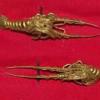
Took a chance on a sword today...and I know when I need help
Lance replied to PolishAvenger's topic in Translation Assistance
Hello Mark, I can't read it but it looks like it's a surrender label. At the end of World War 2 soldiers and civillians were supposed to turn in their weapons/swords, sometimes they put their names and address on them in the hopes that they would have been returned later on. Regards, Lance -
Pretty sad that I was only able to recognize the last 2 characters, seeing as I own a sword by Kanei period Munetsugu with NTHK papers, ubu but had the hamachi moved up. There were a few generations (2-3?) that used Iyo no jo in their signatures, the earliest one (late 1500s-early 1600s) was a priest and was supposed to be the first teacher of Hizen Tadayoshi. I'm still not sure which one mine is, I've read that the first and second were 2 diffrent smiths but I've also read that they were the same smith. Attached are a some images of the tang with the signature on my sword reading Hizen no Kuni junin Iyo no jo Minamoto Munetsugu for comparison. Characters on my sword have more wear on them than the one in your pictures, but these might be of some use as a reference. Regards, Lance
-
It's hard to be sure from the pictures, but the last 2 look characters look like Munetsugu, and the rounded style of signature is similar to first couple generations of early Shinto Hizen Munetsugu. I'm not knowledgeable enought to say the mei is good but it might help point you in the right direction. Regards Lance
-

What do you think about that offer?
Lance replied to Drago's topic in Auctions and Online Sales or Sellers
I'd agree with the other's advice and spend more time on books and join a club before buying any swords, but if you really had the bug I'd say either of the 2 swords in the links below would be a great "first piece" for the price, and probably better than alot of other collectors first sword. From 2 different US dealers, both very knowledgeable and very good reputations. http://www.nihonto.us/MIHARA%20NAGINATANAOSHI.htm http://www.nihonto.com/5.4.11.html Only other advice to give would be to make sure you know how to handle and take care of whatever swords you purchased properly, as they're not getting any younger Regards, Lance -

This Week's Edo Period Corner
Lance replied to Bugyotsuji's topic in General Nihonto Related Discussion
Not sure if this is it but I had this link saved, described as being Meiji Period and looks to be a Meiji period Weekly World News or National Enquirer (google Bat Boy for a god laugh) : For a brief period in the mid-1870s, artistic woodblock prints known as "newspaper nishiki-e" were a popular form of mass entertainment in Japan. These colrful prints fed the public's enormous appetite for sensationalism by retelling shocking stories culled from the major newspapers of the day. The Meiji government swiftly cracked down on the publishers of these "unofficial" sources of information, causing them to disappear as quickly as they had appeared, but not before hundreds of issues had been published and circulated around Japan. While newspaper nishiki-e most often retold stories of scandalous or heinous crimes, they occasionally presented accounts of monsters, ghosts and mysterious happenings, such as the ones included here. http://pinktentacle.com/2008/10/monster ... ws-prints/ source http://www.wul.waseda.ac.jp/kosho/bunko ... index.html Not what you were looking for, but the same blog had some other good posts of Supernatural/mythological prints so I figured I'd add them: http://pinktentacle.com/2011/03/monster ... utsu-ehon/ http://pinktentacle.com/2011/04/namazu- ... sh-prints/ http://pinktentacle.com/2010/04/kaikida ... er-scroll/ I'd love to see sword fittings with these kinds of themes on them, even if they are considered Meiji export pieces Regards, Lance -
I guess being broken, it could be similar to some other themes seen on fittings like broken fans, or a skull/skeleton in the grass (old battlefield) signifying impermanence? There's lots of others but those are 2 that stick out. I should have realized how easy it is to forget how subtle some of this can be when I'm trying to identify certain things without looking at it as a whole. Thanks again, Lance
-
Thanks everyone, my original thought was that it might be the top of of a gate (torii?) but either way part of it would be upside down when mounted on a sword, either worn or held, so I wasn't looking at it properly. I probably would have been better off thinking part of the design was right side up at all times instead. Thanks again, Lance
-
I recently picked up the tsuba pictured below. It's a round iron plate 3 1/8 inches across with gold and shakudo inlay, and looks to have some old lacquer on it. I'm wondering what The shakudo inlays represent? It's basically identical on both sides, only reversed. I think they may originally have been sukashi cut outs that were filled in with the shakudo. I don't recognise what they are supposed to be and would like to learn more about it. Thanks in advance for your time, Lance P.S.: I'm not fishing for information to aid in selling it, but eventually I may sell it if the urge comes. It won't happen anytime soon, but you might see it on ebay months or years from now and wanted to mention it.
-
Hello Jamie, A couple of years back I submitted a sword that wasn't in full polish to the NTHK (npo) when they visited the states and it passed and received papers. Everything was visible for the most part but the point was scratchd up making the boshi a little harder to see than the rest, but it was still visible. I couldn't attend and sent the sword to one of the organizers and they did it for me, then sent it back to me afterwards. The same NTHK group is doing another Shinsa in the US, early October in Minneapolis MN. Below is a link to a post with some of the details, you could contact the poster and get more input on your sword, and if the condition would be good enough to get an opinion for it. viewtopic.php?f=6&t=10537 He's one of the organizers, I already reserved a spot and am sending him a sword to submit for me, as they are offering a service to submit blades for people if they couldn't be there in person. Hope this helps, Lance
-
One of my first posts, for what it's worth I also believe your tsuba is Choshu school. The design looks to be one big Peony blossom. They used it alot on their tsuba, mostly as part of the motif instead of the whole thing, I've only seen a couple like this. Attached are a couple pictures of a tsuba I have similar to yours, same edges too. Mine measures a little over 3 inches across. I had a note with a the translation but it's not in the box with it, I think it might read Choshu ju Katsunao but I'm sure I mistranslated it. Yours looks more 3 dimensional than mine though and maybe a little older, pretty neat. Regards, Lance
-
Hi all hopefully I post this right, first time posting as I found I might have something to add to a discussion after checking out the site for a while. Attached are 2 pictures of a wakizashi signed Sukesada, similar shape as the one originally posted as well as the example Chris posted. I've had it for around 15 years, has a typical Mount Fuji/Crab claw hamon, although the pattern is much more regular and less free flowing than earlier examples as Koto turned to Shinto. I believe my sword was made by one of the many Shinto Sukesada, and is probably nothing special except to me (first sword and given to me by my father) While most of the swords I saw signed or attributed to Sukesada over the years do have the typical Bizen nakago, I've come across quite a few with the other shape, but what's unusual is they most always seem to be wakizashi. Hope this is useful. Regards, Lance


